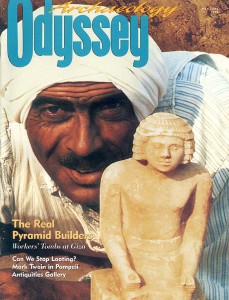In putting together this issue’s article on the Antiquities Problem (“The Great MFA Exposé”), our thoughts turned to unprovenanced objects that can now be studied by scholars because they were bought on the market. If these important remnants of the past had not been purchased—perhaps, in some cases, illegally—they would have disappeared from view for decades or perhaps forever. A good example is the Dead Sea Scrolls (see photo of the Isaiah Scroll), almost all of which were bought from antiquities dealers. Among the most exciting archaeological finds of the 20th century, the Dead Sea Scrolls contain biblical manuscripts (among other documents) a thousand years older than our earliest copy of the Hebrew Bible, providing fascinating new insights into how the biblical text developed. Who could reasonably prefer that the scrolls, because they were not found in a legal, controlled excavation, remain untouched by responsible scholars? In the following section, we have assembled a group of similar finds, which have checkered histories and yet illuminate the past: a clay prism mentioning the mysterious
Already a library member? Log in here.
Institution user? Log in with your IP address.

